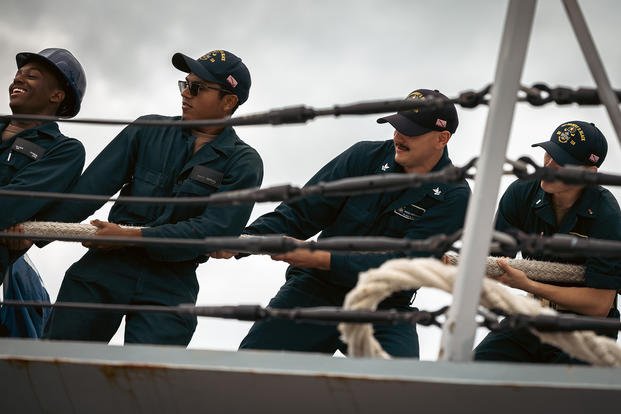
Military bases in the path of Hurricane Milton, a Category 5 storm on Monday, are taking immediate action ahead of its expected landfall this week, as the Department of Defense continues to grow its recovery efforts from Helene’s deadly damage.
Air Force Reserve hurricane pilots, based out of the 403rd Wing at Keesler Air Force Base in Biloxi, Mississippi, gathered data and provided it to government meteorologists that showed Milton has grown from a tropical storm to a devastating hurricane in the Gulf of Mexico. It is projected to make landfall in Florida on Wednesday.
“Data from an Air Force Reserve Hurricane Hunter aircraft indicate that Milton has strengthened to a Category 5 hurricane,” the National Hurricane Center said in an update Monday. “The maximum sustained winds are estimated to be 160 mph (250 km/h) with higher gusts.”
Read Next: Trump Vows to Restore Fort Liberty’s Old Name Honoring Confederate General
Maj. Gen. Pat Ryder, the Pentagon’s top spokesperson, told reporters on Monday that the Department of Defense is monitoring the storm’s path and preparing for all possibilities.
“The federal government, to include [the Department of Defense], is leaning very far forward to be ready to respond to Hurricane Milton, you know, to include thinking through all the potential contingencies, search-and-rescue route clearance, those kinds of things,” Ryder said.
Ryder added that the Pentagon is working with the Federal Emergency Management Agency “to be prepared for the potential impacts once it makes landfall.”
The news of the devastating hurricane’s projected landfall this week comes as National Guard and active-duty soldiers converged on the southeastern U.S. last week to continue recovery and clean-up efforts after the devastating effects of Hurricane Helene — the second-deadliest hurricane to hit the U.S. mainland in the past 50 years, according to CNN, with at least 232 deaths reported across six states.
MacDill Air Force Base in Tampa is right in Milton’s path, National Weather Service projections showed, and base officials ordered widespread evacuations Monday.
The vast majority of base services, schools and other resources were also scheduled to close on Tuesday.
“Unfortunately, we’ve done this before,” Col. Edward Szczepanik, commander of MacDill’s 6th Air Refueling Wing, said in a video statement on Facebook. “So, let’s be good teammates and help each other out so that we can all close the base and weather the storm.”
MacDill also evacuated 12 of its KC-135 aircraft to McConnell Air Force Base in Kansas, Rose Riley, a Department of the Air Force spokeswoman, said.
The 482nd Fighter Wing at Homestead Air Reserve Base south of Miami also began relocating aircraft, moving seven of its F-16 fighter jets to San Antonio, Texas, Riley added.
Navy officials announced Monday that they were also taking precautionary measures ahead of the storm.
Officials said in a statement to Military.com that three Arleigh Burke-class guided-missile destroyers at Naval Station Mayport in Jacksonville on Florida’s northeastern coast — the USS Donald Cook (DDG 75), the USS Thomas Hudner (DDG 116) and the USS Lassen (DDG 82) — would be moved out to sea on Monday.
Other ships at Naval Station Mayport will be anchored in “heavy weather mooring positions.” Aircraft will also be evacuated or hangared at the base.
“Early this morning, Rear Adm. John Hewitt, commander, Navy Region Southeast, instructed all naval installations in Florida to set Hurricane Condition of Readiness Three in preparation for the storm,” Arwen FitzGerald, a spokesperson for Naval Region Southeast, said Monday.
Those preparations include “sandbagging, removing hazards and debris from drainage areas, removing large items from waterfront areas, ensuring emergency generators and vehicles are topped off with fuel, and filling and preparing potable water supplies,” she said.
Last week, in the wake of Helene’s devastation, Defense Secretary Lloyd Austin mobilized 1,000 active-duty soldiers to assist in recovery, clean-up and rescue efforts.
Ryder told reporters on Monday that the Pentagon “is moving another 500 troops with advanced technological assets,” such as drones to assist in search-and-recovery operations, to those already mobilized.
As of Monday, Ryder said that more than 6,000 Guardsmen, including hundreds of high-water vehicles and helicopters, have been utilized in the wake of Helene.
Related: 1,000 Active-Duty Soldiers Called Up to Assist with Hurricane Helene Response






